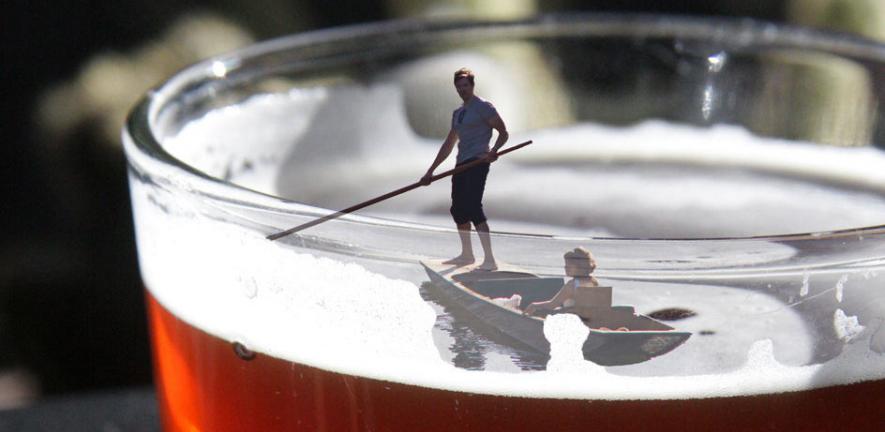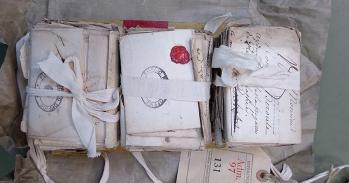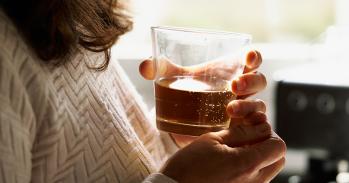
How student bingeing gave birth to modern British booze culture.
How student bingeing gave birth to modern British booze culture.
The habits of the poor and the lowest institutions of public drinking were the targets of the moral campaigners, while the rich young students developed many of the cultural tools we still employ today.
Phil Withington
Students love alcohol. As long as there have been students there have been drunken students, staggering around campuses the world over as they experiment with levels of tolerance for the grape and grain. While their inexperience with intoxication often ends in tears, it was students' enthusiastic embracing of all things alcoholic that led to the social drinking culture we know today.
In a talk for the Festival of Ideas, Dr Phil Withington, a lecturer in the History Faculty, will look at how the dramatic increase in university students during the education boom of the early 17th century cemented much of the ritual and tradition that we are familiar with today, in pubs and clubs up and down the country.
“There’s an assumption among historians that drunkenness during early modernity became inappropriate for civil behaviour, and excessive consumption was the reserve of the common poor,” says Withington. “But there’s a huge amount of evidence that you needed to be affluent to indulge in vast quantities of alcohol, and the new wave of educated elite led the charge.”
During the late 16th and early 17th century, the expansion of grammar schools, universities and Inns of Court meant that by the 1630s, the level of higher education students was at a peak that wouldn’t be matched again until after the First World War, almost 300 years later.
“This expansion in education and literacy had an obvious effect on politics and law, but the implications for English drinking habits were also very significant” says Withington. “Students learned not just to study but to drink, which became integral to male bonding, camaraderie and rites of passage.”
These wealthy, classically-educated young men would emulate their lessons in Ancient Greek and Roman culture, toasting and carousing as public drinking became a normal thing to do. Gentlemen’s clubs, taverns and ale-houses sprang up like wildfire around centres of learning, the birth of the British pub as we know it today, with wine consumption more than doubling over a fifteen year period leading up to 1638, when it reached a level unmatched until the 20th century.
With this new drinking culture came a new set of rules, and conversation became the art form that your social life lived or died on. “You had to be demonstrably funnier than the next person,” says Withington, “banter and wit became very important, with bawdy ballads and zinging one-liners the order of the day. Particularly witty repartee was often noted down in miscellanies and passed among friends and eventually generations.” Known as ‘jest-books’, these collections of the best in boozy banter are precursors to the modern joke-book.
The onus on ‘wit’ fed into the literary culture of the time. As students turned into playwrights and poets, their devotion to the tavern continued. “Swathes of printed literature conveying the conventions of banter and wit, best practise if you like, flooded the market” says Withington. “Miscellanies were anthologies of quotes from across the ages, epigrams, jests and trivia designed to be learned and recited in alcohol-steeped company”. Prominent literary figures such as Thomas Shadwell and Ben Jonson wrote ballads and odes to drunkenness, bringing high art to the ale-house by invoking classical literature in their merry-making.
Drinking games became increasingly prevalent, initiation rites for ‘good fellows’ into the ‘true-hearted society’ of the carousing gent. “It was the sociability of drinking that the early moderns eulogised, rather than the physical effects” says Withington, “drinking games were a natural part of enjoying alcohol and company”. As today, they were based around language, such as the reciting of correct Latin. “In one example of a drinking game from 1673, a meeting between lawyers descends into chaos as they force each other to drink after speaking ‘falso’ Latin. One ends up with his genitals hanging out in the alehouse, which his friends singe with a lit pipe!”
The rise of the carousing culture of the time also led to the creation of regulation and moral campaigning on the dangers of drink. “The structure then was similar to today, but instead of the medical community condemning alcohol, you have clerics and religious moralists providing the concerned voice, drawing on the authority of scripture” says Withington. “The regulative side of our culture and the excessive consumptive side developed at the same time, in the 16th century – they’re in an on-going tension, feeding off each other, much in the same way as today.”
“Intoxicants are integral to early modernity, economically but also culturally, and the era provided a new way of drinking. But the historical neglect of intoxication among the wealthy young elite in early modern England has parallels with contemporary debates about alcohol. By targeting price as a policing tool for example, the focus is always on the chronic consumption of those with low incomes, and the drinking habits of the affluent are ignored. This is a hypocrisy that dates back to the 17th century, when the habits of the poor and the lowest institutions of public drinking were the targets of the moral campaigners, while the rich young students developed many of the cultural tools we still employ today.”
Dr Phil Withington is giving a public lecture called ‘A History of Intoxication’ at 6pm on Wednesday 26th October at the Faculty of History as part of the Festival of Ideas.
This work is licensed under a Creative Commons Licence. If you use this content on your site please link back to this page.





